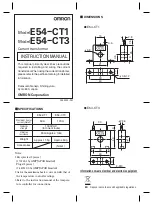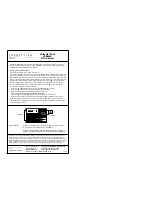
LTC4125
23
4125f
As a quick rule of thumb, changing the value of R
NTC1
to
be smaller relative to R
NTC2
at 25°C will move the tem-
perature threshold higher and vice versa. For example,
using a Vishay “Curve 2” thermistor whose nominal value
at 25°C is 10kΩ, the user can set the temperature to be at
50°C by setting the value of R
NTC1
= 7.5kΩ.
Leaving the NTC pin open or connecting it to a capacitor
disables all NTC overtemperature fault functionality.
LTC4120 EFFICIENCY OPTIMIZER USING DHC
When using the LTC4125 in a wireless power system
with the LTC4120, the DHC pin on the LTC4120 can be
configured to further optimize the overall efficiency of the
system (see Figure 7—circuit enclosed with dotted lines).
Instead of driving a capacitor, the DHC pin turns on a 15V
clamp circuit (D
C
, R
C
, M1) on the rectified input voltage
of the receiver circuit. Note that under some worst case
transient conditions, the 15V clamp needs to dissipate
up to 0.8W.
The 15V clamp voltage is selected to provide 1V margin
to the LTC4120 14V DHC pin threshold. The RC network
value connected to the DHC pin is selected to provide
enough delay to allow the input voltage on the LTC4120
to rise to 39V (allowing for optimum power detection on
the LTC4125) before the 15V clamp is activated. The fol-
lowing criteria should be followed:
RC
V
ZH
– V
BE
(
)
>
1.5
•
T2
Where T2 is the settling time of the optimum power search
step discussed in the Timer Capacitors section. In Figure 7,
V
ZH
= 39V, V
BE
= 0.7V and T2 is 18ms. Therefore, the value
of RC needs to be greater than 1s. Note that the resistance
value is chosen such that at the 15V clamp voltage, the
NPN base current supplied through the resistor is greater
than 0.5mA. Therefore, select 24.9k for R and 47µF for C.
The most important criteria for the NPN is that the common-
emitter current gain at I
b
= 0.5mA is greater than 50, and
its maximum power dissipation capability is greater than
0.5W. A standard 3904 NPN works well.
Set the V
DTH
value to 9.4 bits = 367mV, such that at this
desired step the ∆V
FB
> V
DTH
condition is satisfied. With
V
IN
= 5V, and a recommended R
DTH1
+ R
DTH2
value in
the order of 100kΩ, the following values are obtained:
R
DTH2
= 7.87kΩ and R
DTH1
= 100kΩ.
OVER TEMPERATURE FAULT THRESHOLD
One of the fault conditions used in the Optimum Power
Search is the overtemperature fault. To set this temperature
fault threshold, connect an NTC thermistor R
NTC2
, between
the NTC pin and the GND pin, and a resistor R
NTC1
, from the
IN pin to the NTC pin (Figure 17). In a typical application,
the NTC thermistor is thermally coupled to the surface of
the transmitting coil, and the temperature threshold is set
to ensure safe temperature on the coil surface.
In the simplest application, R
NTC1
is a 1% resistor with a
value equal to the value of the chosen NTC thermistor at
25°C (R
NTC2
at 25°C). In this simple setup, the LTC4125
senses a fault condition when the resistance of the NTC
thermistor drops to 0.538 times the value of R
NTC2
at
25°C. For a Vishay “Curve 2” thermistor (B
25
/B
85
= 3486),
this corresponds to approximately 41.5°C. With a Vishay
“Curve 2” thermistor, the LTC4125 has approximately 5°C
of hysteresis to prevent oscillation about the trip point.
R
NTC2
R
NTC1
IN
NTC
LTC4125
4125 F17
Figure 17. NTC Thermistor Connection
Consult manufacturer data sheets for other types of NTC
thermistors. The temperature threshold can be adjusted
by changing the value of R
NTC1
. Instead of simply setting
R
NTC1
to be equal to R
NTC2
at 25°C, R
NTC1
is set according
to the following formulas:
R
NTC1
= 1.857
•
R
NTC2
at temperature_threshold
applicaTions inForMaTion







































